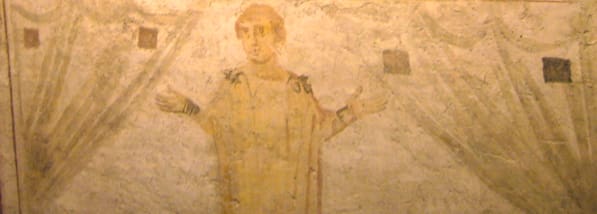Editor’s Note: Today, Dr. Eric Johnston joins our team of writers. Dr. Johnston is an assistant professor of theology at Immaculate Conception Seminary, Seton Hall University, South Orange, New Jersey and we are blessed to have this contribution from him. Please welcome him warmly to our site.
Traditionally, the Eucharistic Prayer is divided into the people’s part and the priest’s part. The Preface is a central part of the Mass and the first half of the Eucharistic Prayer. In some Eastern Catholic rites, the priest stands outside with the people during the Preface, then enters into a little building for the priest’s prayers that follow. For some thousand years in the West, the Preface was sung so the people could hear, while the priest’s prayers were silent.
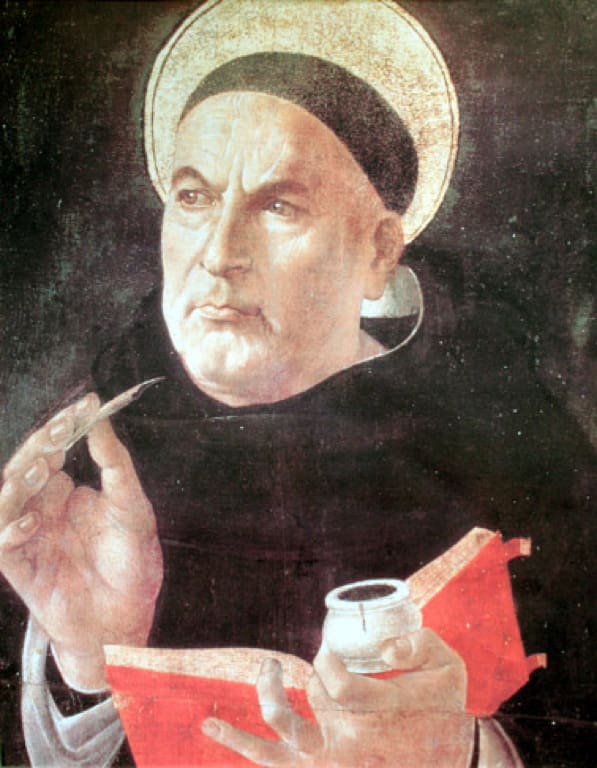
 St. Pius X encouraged the people to follow the priest’s prayers, too, so now they are said out loud. But the Preface is still distinct as the people’s part of the Eucharistic prayer, the part where we lift up our hearts to the Lord. St. Thomas Aquinas called it “the part of the consecration” dedicated to “exciting the people to devotion.” The Preface is meant to rouse us, while we stand, just before we kneel for the priest’s prayers.
St. Pius X encouraged the people to follow the priest’s prayers, too, so now they are said out loud. But the Preface is still distinct as the people’s part of the Eucharistic prayer, the part where we lift up our hearts to the Lord. St. Thomas Aquinas called it “the part of the consecration” dedicated to “exciting the people to devotion.” The Preface is meant to rouse us, while we stand, just before we kneel for the priest’s prayers.
Parts of the Preface
The Preface has a beginning, a middle, and an end. The beginning is the dialogue: “Lift up your hearts…it is right and just.” The priest’s prayer follows that. And, the end of the Preface is the “Holy, holy, holy” or Sanctus.
The People’s Dialogue
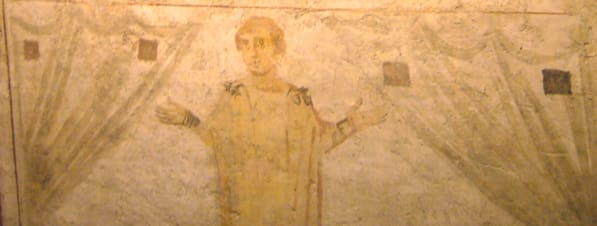 “Lift up your hearts,” the priest says. And, we begin by affirming that “we lift them up to the Lord.” But, all too often that remarkable affirmation is followed by distraction, because many are unsure what is going on in the prayer that follows. We can pray the Mass better if we fully appreciate the Preface.
“Lift up your hearts,” the priest says. And, we begin by affirming that “we lift them up to the Lord.” But, all too often that remarkable affirmation is followed by distraction, because many are unsure what is going on in the prayer that follows. We can pray the Mass better if we fully appreciate the Preface.
In Latin, “Praefatio” simply means “the Prayer”: speaking “in front of” the face of God. (Fatio, “speaking,” is also the root of the words “confession” and “profession”.) When the Tradition calls this section the “Preface of the Mass” it means this is the “prayer” of the Mass. This is very important!
The Priest’s Prayer
In between the people’s prayer and the Sanctus is a prayer said by the priest: the part of the Mass he is most encouraged to sing. This prayer changes somewhat from day to day, but it also always has three parts. We can appreciate what it is saying if we watch the connecting words.
The first part of this prayer always begins, “It is truly right and just.” Truly. First the priest affirms what has just been said in the dialogue. It is “right and just” to give thanks to the Lord. In fact, it is “our duty and our salvation.” This is quite a claim: the perfect justice, the most worthy thing, our ultimate duty and in fact our very salvation is “to give thanks to the Lord.” This is the heart of our relationship with God. It is the original name of the Mass. The Greek word “Eucharistia” means “giving thanks.”
The middle part of the priest’s Preface prayer is the part that most varies. But it almost always begins with the word “for,” meaning “because.” In this part, the priest lists some of the reasons that it is truly right and just to give thanks. It is right to thank him for he has given us the saints, for the blood of the martyrs shows his marvelous works, for he created man and redeemed him, etc. We pray this prayer best by “lifting up our hearts” in thanks for the things the priest is describing, even saying (under our breath or in our hearts) “yes, thank you, Lord.”
The last part of the priest’s Preface prayer almost always begins, “And so” or “therefore.” Therefore. Since it is truly right and just to give thanks, for he has done all these wonderful things, therefore we join with the angels in praise. This section introduces the “Holy, Holy, Holy,” the Sanctus.
The Holy, Holy, Holy or Sanctus
The Sanctus, the last part of the Preface, is a song of praise. But, the Mass joins thanks and praise together. We join in the praise of the angels and saints because we are giving thanks. We praise better when we are in a posture of thanksgiving. That is how the Preface “excites our devotion.”
The two parts of the Sanctus emphasize this. They are the prayers of the angels in Isaiah 6:3 followed by those of the crowd of people as Jesus enters Jerusalem: “Blessed is he who comes in the name of the Lord.” Thus this heavenly song joins the highest and the lowest.
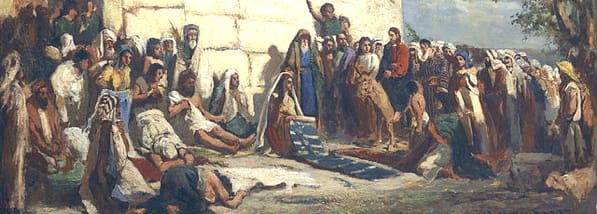 But it also joins two reasons for thanksgiving: heaven and earth are full of his glory, and he comes. That is, he has created us, and he redeems us. We give thanks and praise for both the work of Creation and the work of the Incarnation, for making the heavens and for coming to Jerusalem.
But it also joins two reasons for thanksgiving: heaven and earth are full of his glory, and he comes. That is, he has created us, and he redeems us. We give thanks and praise for both the work of Creation and the work of the Incarnation, for making the heavens and for coming to Jerusalem.
The Preface Explains what Follows It in the Eucharistic Prayer
Finally, the thanksgiving of the Preface explains what happens next during the part when we kneel in many Catholic rites (some people refer to it as the “kneeling part of the Mass”). The “Institution Narrative”, sometimes called the consecration, itself emphasizes this thanksgiving: “giving you thanks, he said the blessing, broke the bread . . . once more giving you thanks, he said the blessing, and gave the chalice to his disciples.” Eucharist: thanksgiving.
The priest, “in persona Christi” (in the person of Christ) does three things while we are kneeling. First, and most centrally, he makes Jesus present. But Jesus is present to bring us into communion with him: so that we can join into his thanks. That is what the Son does: he receives, and gives thanks: Jesus the priest.
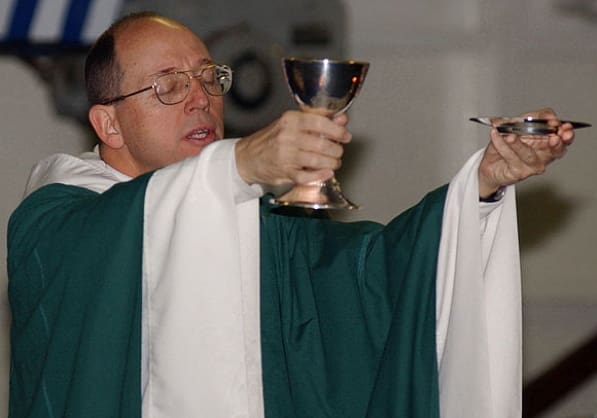 Second, the priest offers the Real Presence as a sacrifice. In the traditional understanding, sacrifice is not principally about killing, but about giving thanks and praise. We lift up something to say thank you. We celebrate a memorial, a remembrance of what Jesus has done. We do this perfectly by offering the body and blood of Christ himself. The sacrifice of the Mass is the perfect act of thanksgiving: Jesus the victim.
Second, the priest offers the Real Presence as a sacrifice. In the traditional understanding, sacrifice is not principally about killing, but about giving thanks and praise. We lift up something to say thank you. We celebrate a memorial, a remembrance of what Jesus has done. We do this perfectly by offering the body and blood of Christ himself. The sacrifice of the Mass is the perfect act of thanksgiving: Jesus the victim.
And third, the priest makes petition. He asks God for all sorts of things, but above all, he asks the Lord to give us this perfect presence of Jesus. Because asking for our daily bread is itself a form of thanksgiving: to realize that everything comes from God, and everything leads back.
In Summary
So, that’s why the Preface is such an important part of the Mass. It’s all about arousing our devotion and giving thanks to God for all he has done for us, all he has given us and all he is about to do for us. And, we have much to be thankful for. Indeed, as one Mass prayer says, “You have no need of our praise, yet our desire to thank you is itself a gift. “
+
Art: [St] Pope Pius X, [between 1903-1914], Tryphosa Bates Batcheller, PD-US; Thomas von Aquin, unknown date, Sandro Botticelli, PD-US; Roma, case romane del Celio – fenestella confessionis della basilica dei santi Giovanni e Paolo, 15 April 2009, own work, Lalupa, CC; Triumphal entry into Jerusalem, 1890-1918, Nikolay Koshelev, PD; “Chaplain Lt. John Burnette prays over the Blood and Body of Christ during Sunday Roman Catholic Mass aboard the Nimitz-class aircraft carrier USS Harry S. Truman”, 24 October 2004 (Atlantic Ocean), U.S. Photographer’s Mate Kathaleen A. Knowles, PD; all Wikimedia Commons.


